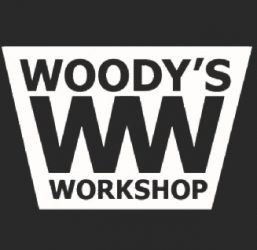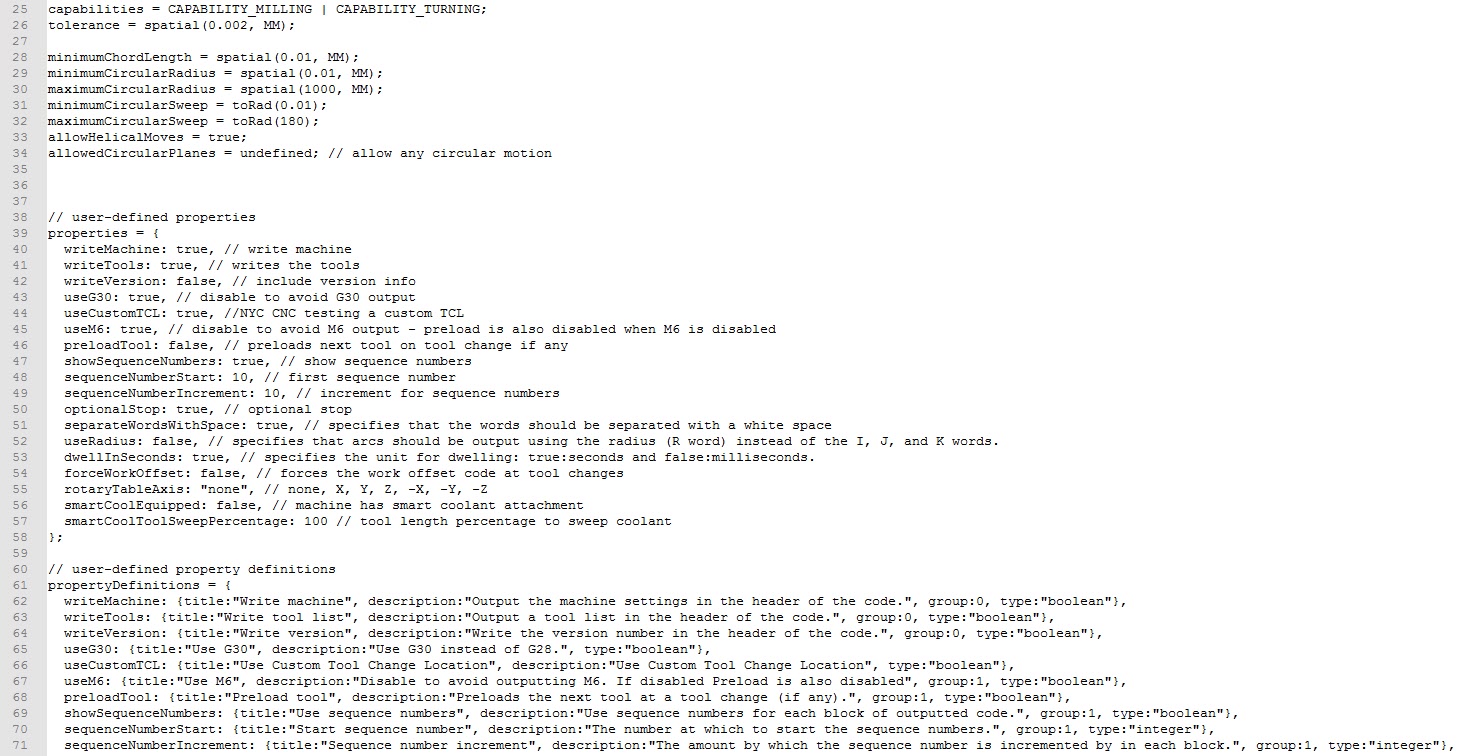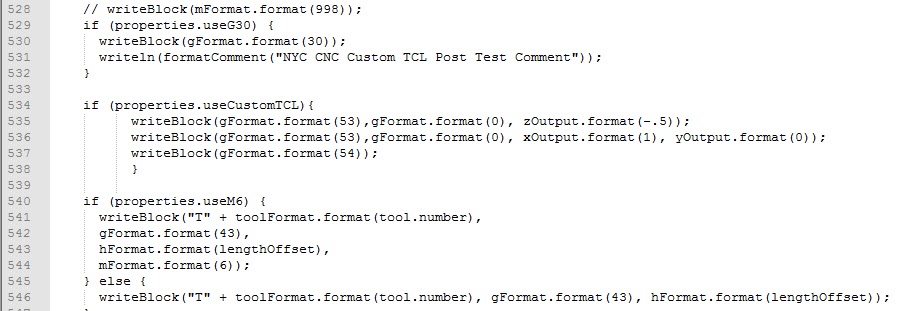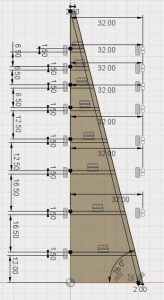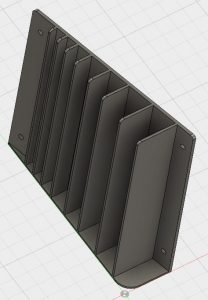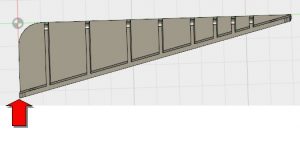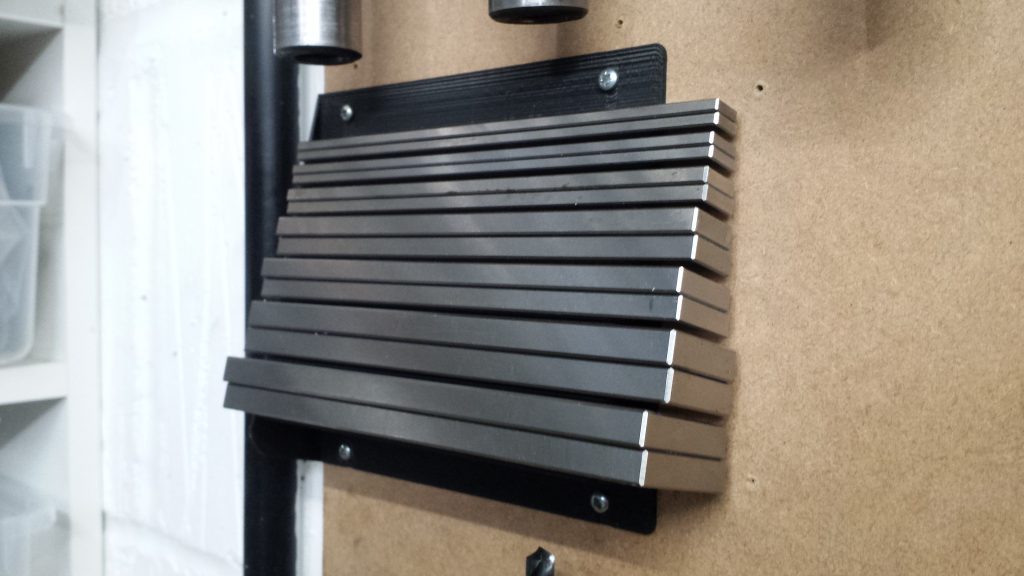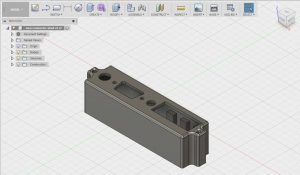Golf Caddy Locks
We have a couple of rigid golf caddy cases that take a full golf bag plus whatever else you can squeeze in when going on a holiday trip. Last trip to Hawaii this included lots of shoes, snorkels, flippers etc. These have or at least had two cabinet style locks on them but not anymore. Customs / security at Seattle decided they wanted to have a look inside and took the easy option and smashed the locks off, had a look inside and then Gaffa taped the case back up. Lovely.
Everything arrived home safely with nothing missing but now the debate on how to replace the locks. Clearly the idea of locking them does not go down well with baggage security teams. I have knocked up a design in Fusion that only needs a single cable tie to make it secure. I have 3D printed a concept model from the Fusion design and I have now run the finished items in aluminium using the Tormach CNC. I used a combination of CNC and manual milling to get the results and this highlighted once again that the combination of a CNC and manual is incredibly useful.

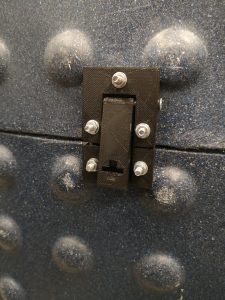
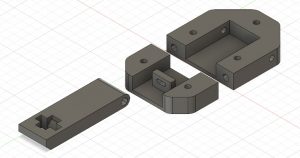
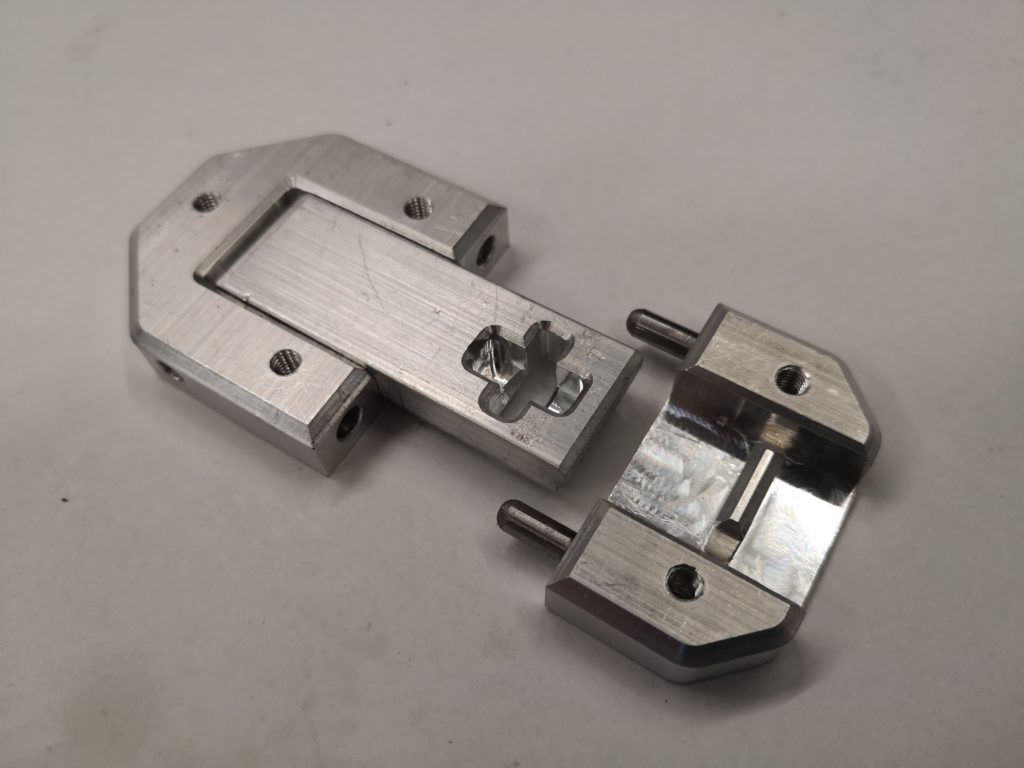
Ring Lights
I have been receiving requests for my machine spindle illumination lights using car headlight ring light clusters and have got the process fairly slick.
I first of all edit the centre clearance hole in the boss in Fusion in preparation for printing. I then 3D print the power supply box and lid and while putting this together I get the boss print underway. The boss takes around 7 hours to print on standard quality. . Given the amount of interest being shown I think a formal write up would be useful for others with perhaps the Fusion file as a download. Working on it and more to follow.

Update 1 – the ring lights are available on Amazon at around GBP14 per pair and you can select diameter (and colour). Buy the largest diameter you can so that there is reduced shadowing around the tool point in the mill or drill press. They are cheaper to buy on EBay from China but there is a longer delivery time.
UPDATE 2 : – Since this post I have run quite a number of ring mounts for third parties and I now 3D print them with the spindle hole offset so that the shadowing from the chuck when working with shorter tools is reduced.

Similar or related subjects : –
- Fusion Electronics Library Notes and Crib Sheet
- I had a ChatGPT experience
- Fusion Sheet Metal model export as PDF
- Drawing a parabola in Fusion
- Creating Customised Threads in Fusion 360
- Automated 3D printed collet storage using Fusion 360 parameters
- Fusion 360 Keyboard Shortcuts
- Creating a worm drive in Fusion 360
- Fusion 360 Parameter Lookup Sheet
- Adding Colour Coding to Fusion 360 Assemblies
